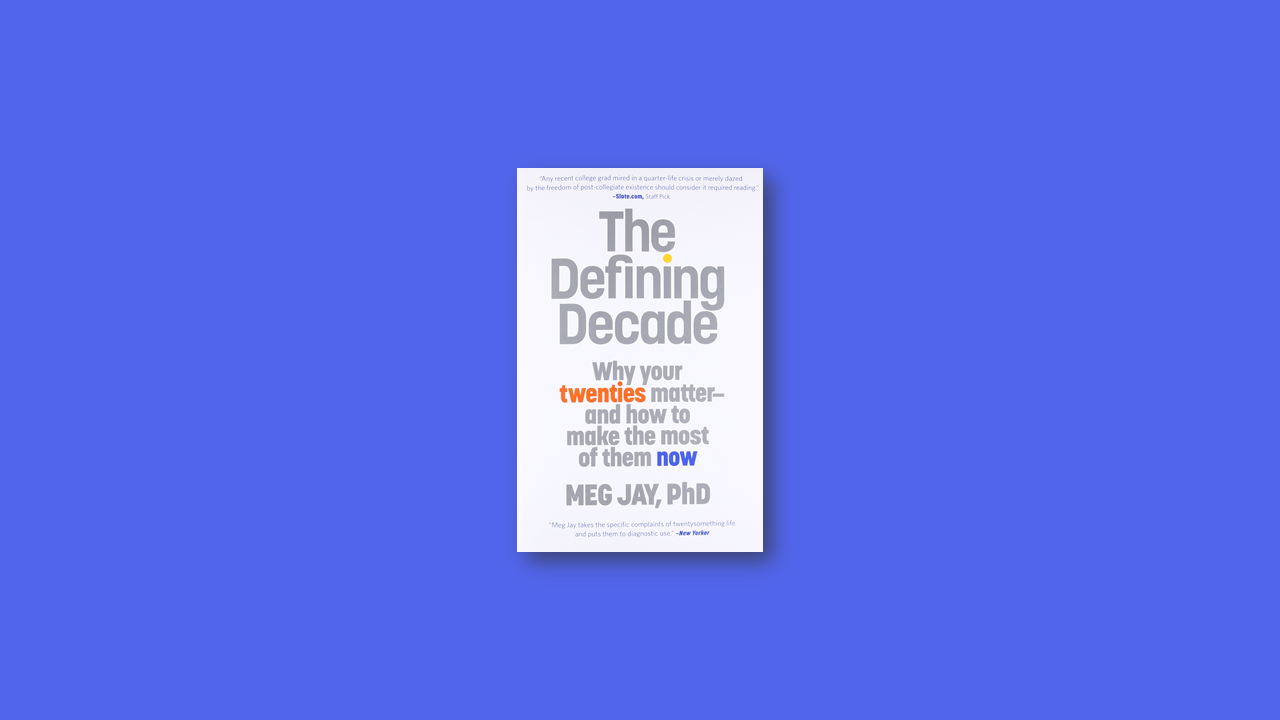Here’s the harsh truth – no matter how smoothly it goes, later bloomers will likely never close the gap between themselves and those who started earlier in their 20s. This leaves many 30s and 40s feeling as if they’ve paid a surprisingly high price for a string of random 20-something jobs. So, how do we avoid paying this steep price before it’s too late? Well, that’s the question ‘The Defining Decade’ sets out to answer.
The weakness of strong ties
From the school yard to the board room, people are more likely to form close relationships with those most like themselves. Our strong ties feel comfortable and familiar but other than support, they may have little to offer. They’re often too similar and even too similarly stuck to provide other than sympathy. They often don’t know any more about jobs or relationships than we do.
The strength of weak ties
Weak ties feel too different, or in some cases feel too far away to be close friends. Bu that’s the point. Weak ties give us access to something fresh. They know things and know people we don’t know. Information and opportunity spread faster and further through weak ties.
20-somethings are like being a middle of the ocean.
You couldn’t see the land in any direction so you couldn’t know which way to go. You feel overwhelmed by things and often feel like you can’t go anywhere or do anything. You feel equally paralyzed by the fact which of the anything will work out.
The question is ‘what will I do if I don’t win the lottery’.
Asking yourself ‘what will I do If I win the lottery’ gets you thinking as if talent and money doesn’t matter. But they do. The question 20-something needs to ask themselves is ‘what would I do if I didn’t win the lottery’, ‘what might I do well enough to support the life I want’, and ‘what might I enjoy enough that I won’t mind working at it in some form or another for years to come’.
Reaching your full potential in your 30s or 40s or 50s.
Contrary to what you might believe, reaching your potential doesn’t usually happen in your 20s. And starting that process often means what doesn’t look so good such as choosing a starter job. These are the years you put the hard work in. You might be fetching coffee for higher ups in the office at least until you’re 30. And that’s perfectly normal.
Your personality change in 20s than any time before or after.
Your 20s are your best chance for change. Many people have gone from socially anxious to socially confident enough in a relatively short period of time. These same shifts can lead to very different life. The 20s are where people and personality are poised for transformation.
Life starts to feel better across 20s.
You become more emotionally stable and less tossed around by life’s ups and downs. You become more conscientious and responsible. You become more socially competent. You become more agreeable and more cooperative with others. You become less anxious and angry. But of course, these changes don’t occur to everyone.
“Feeling better doesn’t come from avoiding adulthood. It comes from investing in adulthood.”
Older sperms may be associated with various neurocognitive problems in children including autism, schizophrenia, dyslexia and lower intelligence
For this reason, both men and women ought to be thinking about the time that clicks. Fertility or the ability to reproduce peaks for women during late 20s. Biologically speaking, 20s is the easiest time for most women to have babies. By 30s, ferity drop considerably. By 40s, fertility plummets.
20s are especially prone to ‘present bias’.
Their brains are still developing forward thinking to anticipate consequences and plan for the future. When they do turn to peers or older others with nervous questions about their lives, they often receive “It will work out. You have all the time in the world.” Again and again, 20-somethings hear they have infinite time but so little time for the purportedly good stuff. This makes living in the present easy. It’s connecting the present with the future that takes work.
Good stories and happy endings are more intentional than random.
Most 20-somethings can’t write the last sentence of their lives but when pressed, you can usually identify things you want in their 30s or 40s or 60s and things you don’t want for that matter. Now, work backwards from there, so you know where to invest your time today, tomorrow, next week, next month and so on… This is how you create happy endings. This is how you live your life in real time.

